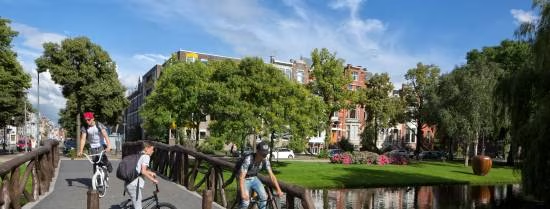In the national top 10 of neighbourhoods with the most young people at risk of ending up in crime, the city of Rotterdam occupies the third and sixth place with respectively neighborhoods Delfshaven and Feijenoord. A worrying development for which long-term solutions must be sought, emphasises Robby Roks, associate professor of Criminology at Erasmus University Rotterdam.
RTL Nieuws estimates that there are more than 162,000 at-risk youths in the Netherlands. They often grow up in a disadvantaged neighbourhood and with debts, have difficulty keeping up at school (which can lead to early school leaving) and already receive community service at a young age. “Some of them may do very well in a few years’ time, but others grow into organised crime. You can think of cocaine trafficking, but also involvement in liquidations and extortion,” says Roks.
Recently, the Ministries of Justice and Security and Legal Protection together set aside 143 million euros for the prevention of new generations of drug criminals in problem neighbourhoods. According to Roks, these are steps in the right direction. “Over the past ten years, youth work and community work have been cut back from neighbourhoods where they were really necessary. But it takes more than that, such as getting rid of the structural inequalities. If we are not on top of that, it fighting a losing battle”, he says to RTL Nieuws.

What makes at-risk youth not ending up in crime?
At Erasmus University Rotterdam, broad prosperity is an important theme. Roks’ research is also of great value in this area. “When it comes to social issues, we often move too quickly to addressing or making policy, while we often don't know very well what the problem actually is. With my research, I try to get a more systematic and scientific view of the issues,” he explains.
For example, Roks thinks it’s important to do further research on young people in the near future. "Now it’s about the risk factors, but what is at least as interesting are the protective factors: what ensures that at-risk youth do not end up in crime? We don’t know nearly as much about that yet, and that could be very useful information.”

President of the Executive Board Ed Brinksma: “For the economy, you can use the metaphor of a leaking bath. Technological innovation can be compared to buckets of water with which you refill the bath, but because of the leaks a lot is lost. Social innovation tries to reduce, or even stop, the leaks. Both lead to a greater volume of water, i.e. economic growth. This is also how we try to look at the topic of broad prosperity. How can we as a university not only innovate, but also contribute to structural solutions to social problems? The government should therefore invest more in broader prosperity and thus reduce the inequality in society and the divide, because the divide will only get bigger if we do nothing.”
- Researcher
- More information
Read the RTL Nieuws-article (in Dutch)
- Related content
- Related links
- News dossier Inclusive Prosperity and Equal Opportunities

